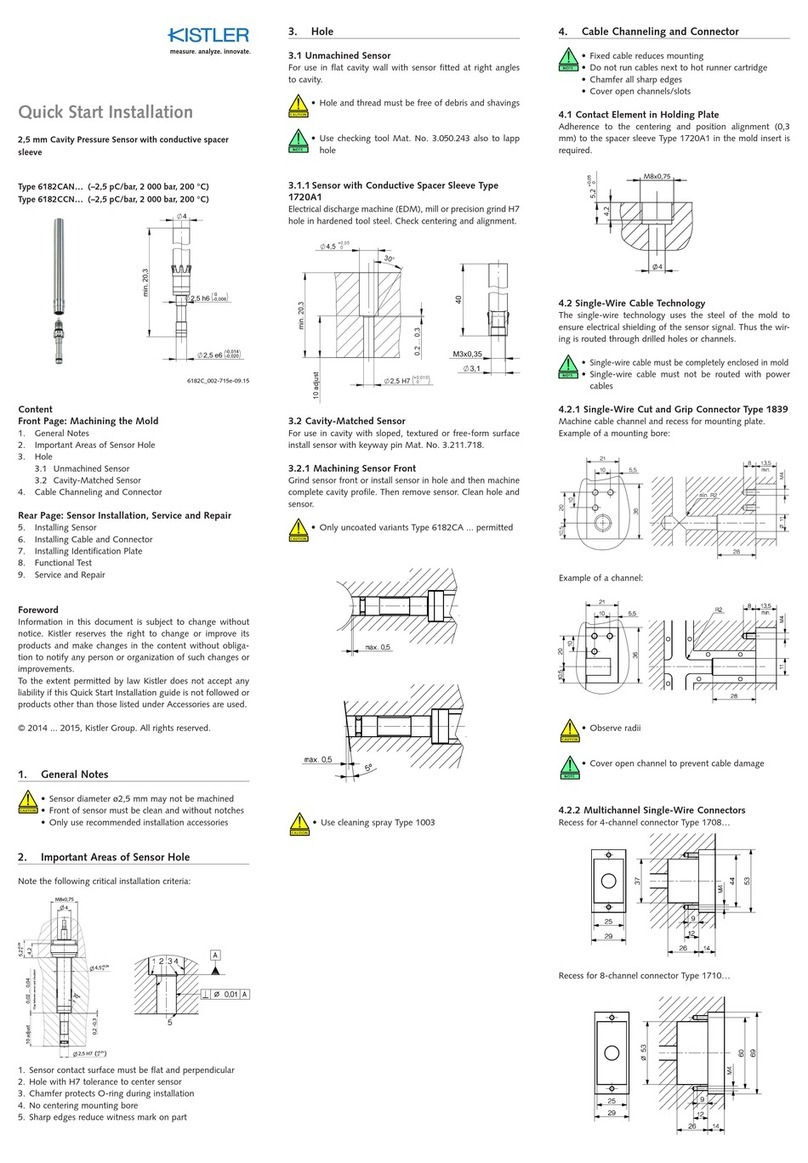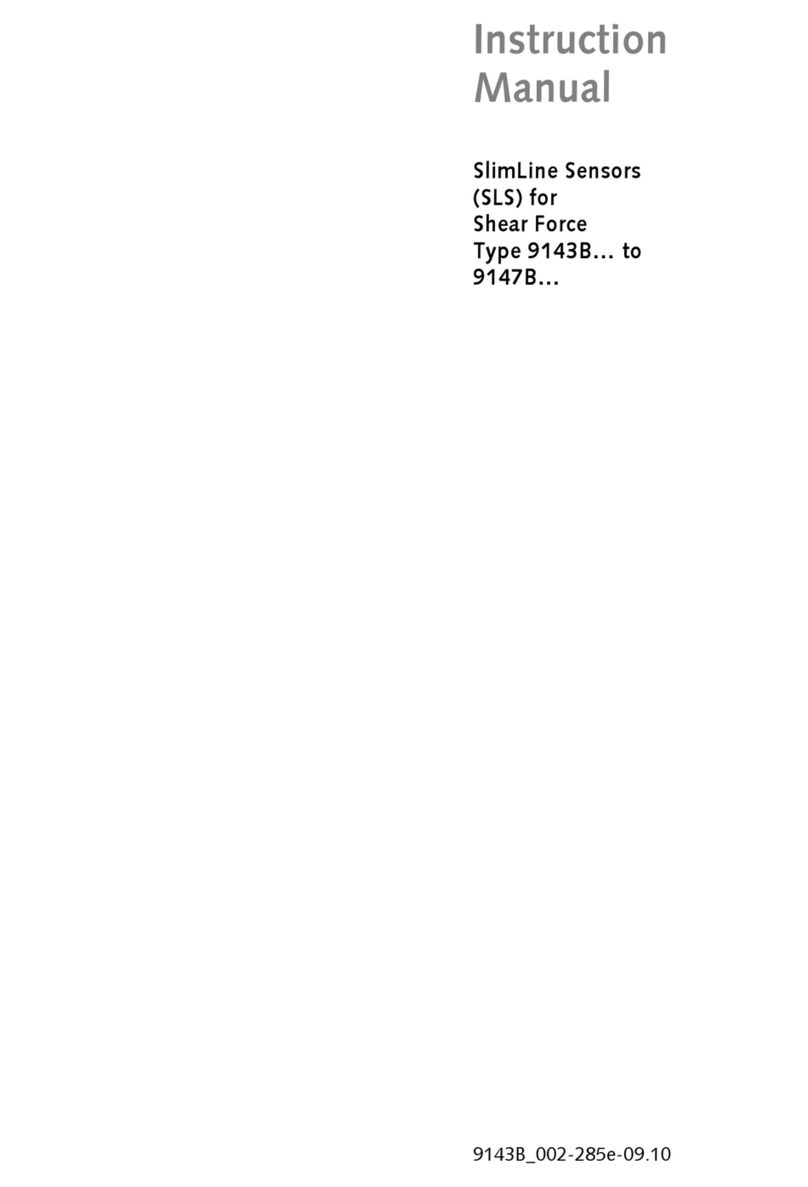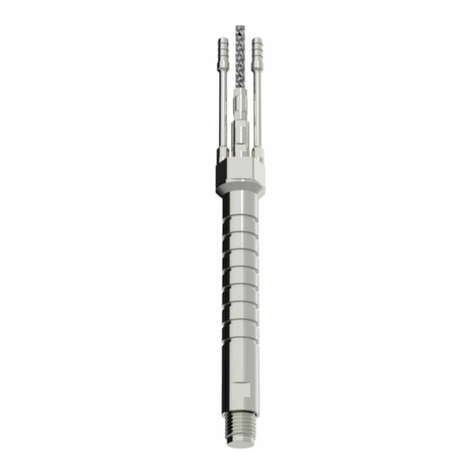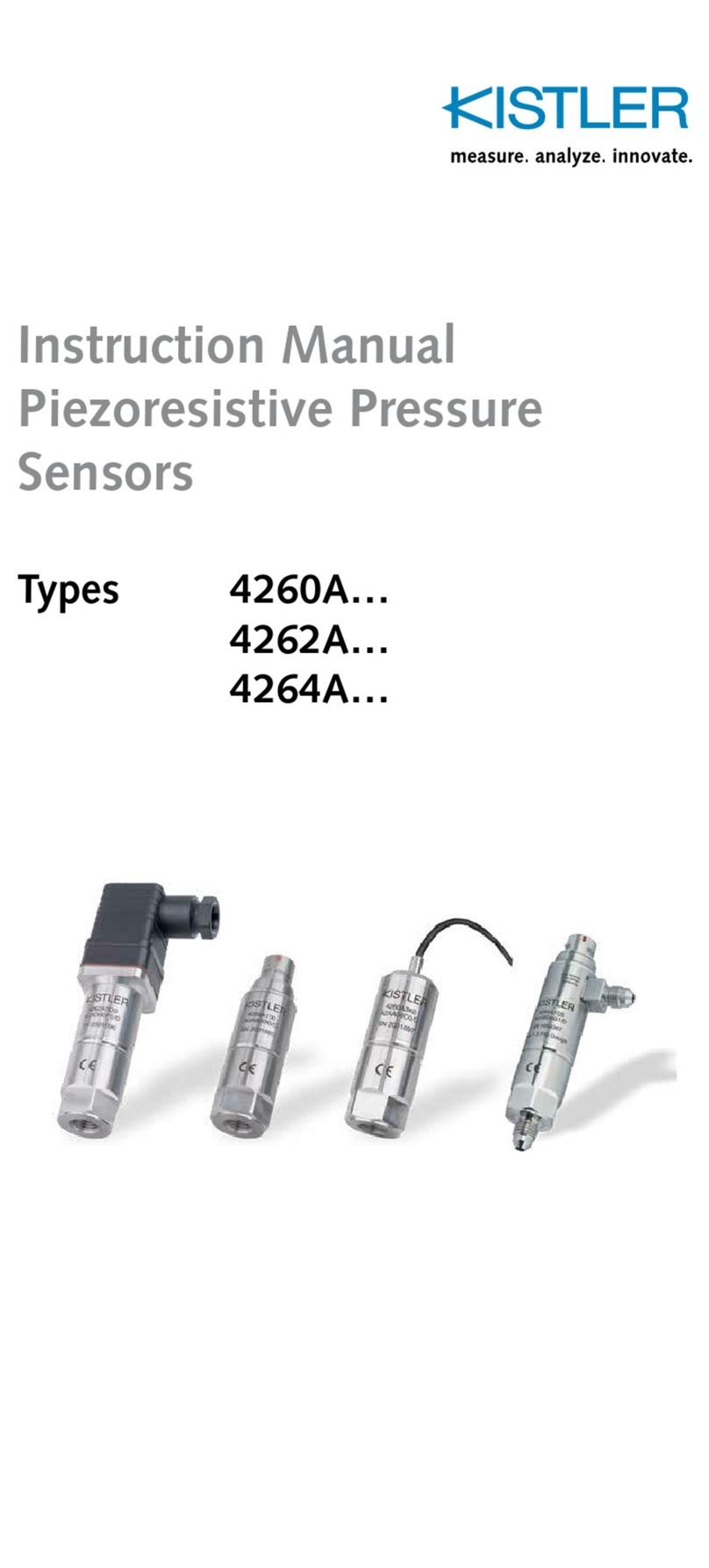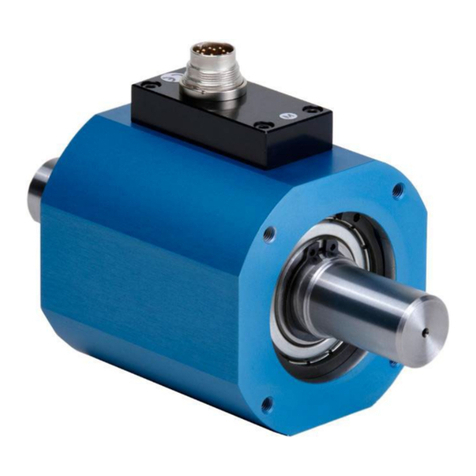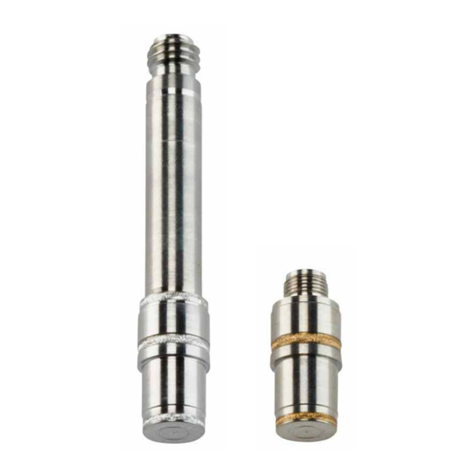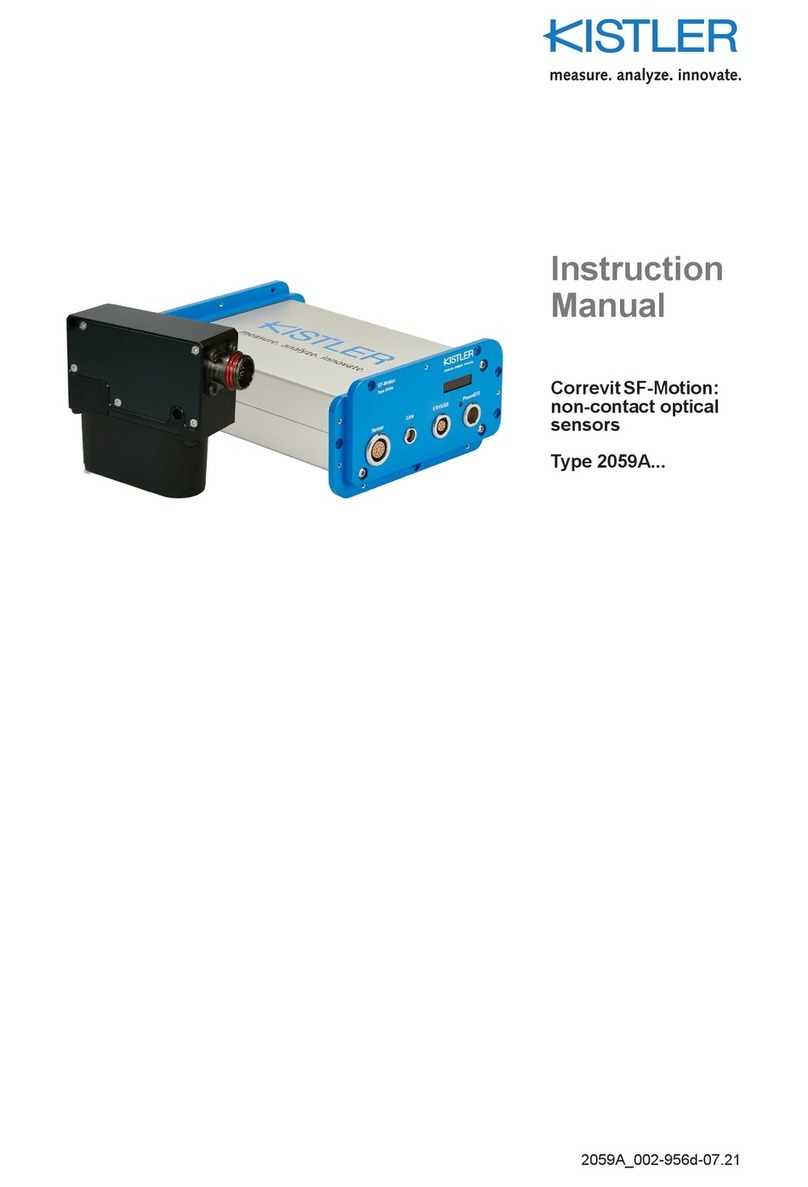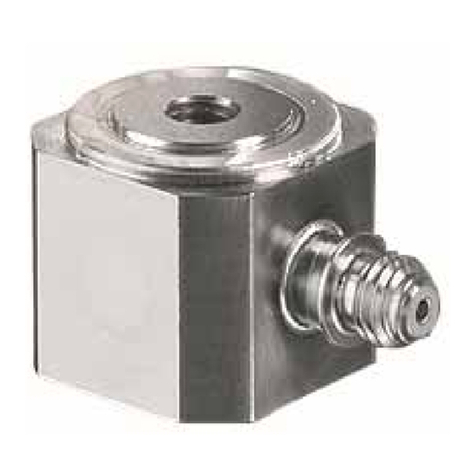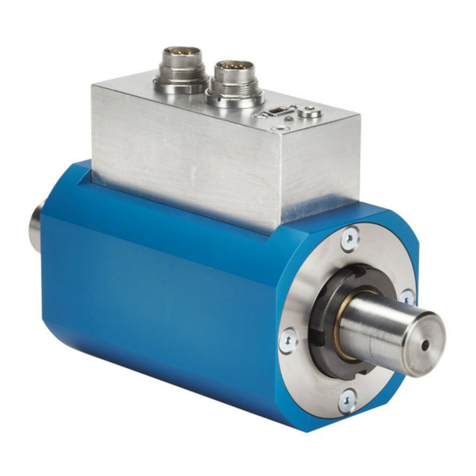
Kistler Group
Eulachstrasse 22
8408 Winterthur, Switzerland
Tel. +41 52 224 11 11
Fax +41 52 224 14 14
info@kistler.com www.kistler.com
6184A_002-504e-07.09 Kis120 ©2009, Kistler Group
5. Installing Sensor
Ensure all sensor hole and threads are clean•
Use checking tool Type 1365•
A chamfered cable channel or cable hole prevents•
damaged cables
5.1
Sensor Installation with Mounting Nut Type 6465
Slide measuring tip of sensor into spacer sleeve Type 6466
and install into hole. Lightly tighten mounting nut Type 6465
with socket wrench Type 1363. Do not over tighten; sensor
must not be preloaded.
Do not machine spacer sleeve Type 6466•
Do not preload sensor•
Tighten mounting nut with socket wrench Type 1363•
5.2
Sensor Installation with Thrust Washer Type 6470
Slide measuring tip of sensor into spacer sleeve Type 6466
and install into hole. Use thrust washer Type 6470 to support
spacer sleeve.
5.2.1 Machining Thrust Washer Typ 6470
If possible, adjust tool insert according to drawing dimen-
sions. Alternatively, place sensor and sleeve into hole and
determine exact length of thrust washer to meet the speci-
fied dimension. Lap thrust washer so the end is square and
perpendicular. Remove any burrs and install.
For multi-cavity applications each thrust washer should be
numbered and allocated to a sensor.
Do not machine spacer sleeve Type 6466•
Do not preload sensor•
For multi-cavity applications the thrust washers should•
be numbered
6.1.1 Cut & Grip Connection
Cut the single-wire cable to length and do not strip the
insulation. Loosen the knurled connector by hand without
removing the rear section.
6.1.2 Installing Single-Wire Connector
Install connector and mounting plate in recess. Attach cap
using one of the screws. Place cap on open connector.
Installation of Connector Type 1839 and Mounting Plate
Installation of Multichannel Connector
Example: Type 1708A...
7. Installing Identification Plate
Rivet plate to mold or secure with four M2,5 screws.
8. Functional Test
On completion of mold assembly, test sensor insulation and
sensitivity.
Ensure that connector is dry•
Use cleaning spray Type 1003•
8.1 Insulation Test
Use insulation tester Type 5493 to check sensor insulation.
Resistance >1013 Ω.
8.2 Sensor Functional Check
Test sensor in the mold on the injection molding machine.
9. Service and Repair
Piezoelectric pressure sensors are maintenance-free. Insulation
and sensitivity of the installed sensor should, however, be
checked after each molding run.
Ensure that connector is dry•
Cover sensor hole during cleaning•
Use cleaning spray Type 1003•
9.1 Insulation Test
Use insulation tester Type 5493 to check sensor insulation.
Resistance >1013 Ω.
9.2 Sensor Functional Check
Test sensor in the mold on the injection molding machine.
Sensor sensitivity test only possible in Kistler Factory
9.3 Removing Sensor
Remove sensor with a magnet or use a flat ejector pin to
press on the sensor front.
Do not use a hammer on the sensor front•
Do not use a sharp center punch•
Use a magnet to lift sensor from hole•
9.4 Single-Wire Repair
Slightly damaged cables can be repaired using the Repair Kit
Type 1207. If single-wire cables have been severed, solder
ends, slide over Teflon tube and cover with shrink tubing.
Do not overheat sensor and cable when using hot•
air blower
9.5 Repairs at Kistler
Factory repairs at Kistler are arranged by the local sales
office.
Information www.kistler.com
9.6 Disposal Instructions for Electrical and
Electronic Equipment
Do not discard old electronic instruments
in municipal trash. For disposal at end
of life, please return this product to an
authorized local electronic waste dis-
posal service or contact the nearest Kistler
Instrument sales office for return instruc-
tions.
6. Installing Cable and Connector
Check again that edges of cable channel and hole•
are chamfered
Use a metal plate to cover open ducts/slots•
Attach cap and place on connector•
6.1 Single-Wire-Technique
Ensure electrical shielding; Enclose Single-wire cable•
completely in mold
Single-wire cable may not be routed with power•
cables
Ensure that all contact surfaces and threads are clean•
and dry

